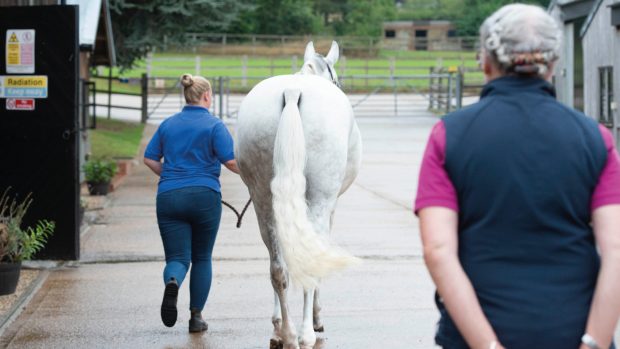Equestrian businesses are being warned of the potential dangers of being underinsured.
Two recent legal cases have highlighted the expense of defending personal injury claims.
In one case, defended by HorseSolicitor, which concluded in the autumn (28 October), an equine events display company was forced to pay out more than £15,000 after a sub-contractor was kicked by a partially sighted horse.
The claimant (not pictured), who suffered a fractured leg in the accident in Sheffield on 12 April, alleged that the company had provided an “unsafe place to work”.
The company was underinsured as it had specifically elected not to include cover for injury caused to employees/contractors by the horses.
Due to government changes to personal injury cases — implemented in April 2013 — even when a defendant successfully defeats a claim, there are very limited circumstances in which the court will allow the defendant to recover their legal fees incurred. Defence costs of a contested trial can run into tens of thousands of pounds.
“The defendant does not feel that they did anything to warrant the claim against them, however the commercial reality of defence costs being unrecoverable led them to choose to reach a settlement at an early stage,” explained the HorseSolicitor’s Neil Rees.
In another similar case, a livery yard owner in Usk, Monmouthshire, who was not insured for riding lessons, faced a claim after a child sustained back injuries in July 2013 on her property, requiring metal rods to be inserted into her spine.
The owner’s expenditure could potentially have been hundreds of thousands of pounds, but the case was closed on 12 January 2014 with legal fees of £1,500.
Both cases may have been avoided if the defendants had not been underinsured.
“Each policyholder should ensure that the level of cover and extent of the policy that they have meets the likely risks that they may face in the event of a claim,” Mr Rees added.
“Had the company paid for the increased insurance cover [in the first case] they would have had an indemnity from their insurer in respect of both the claimant’s claim for damages and legal costs, and also the costs of defending the case to trial.”
Ref: Horse & Hound; 11 December 2014





